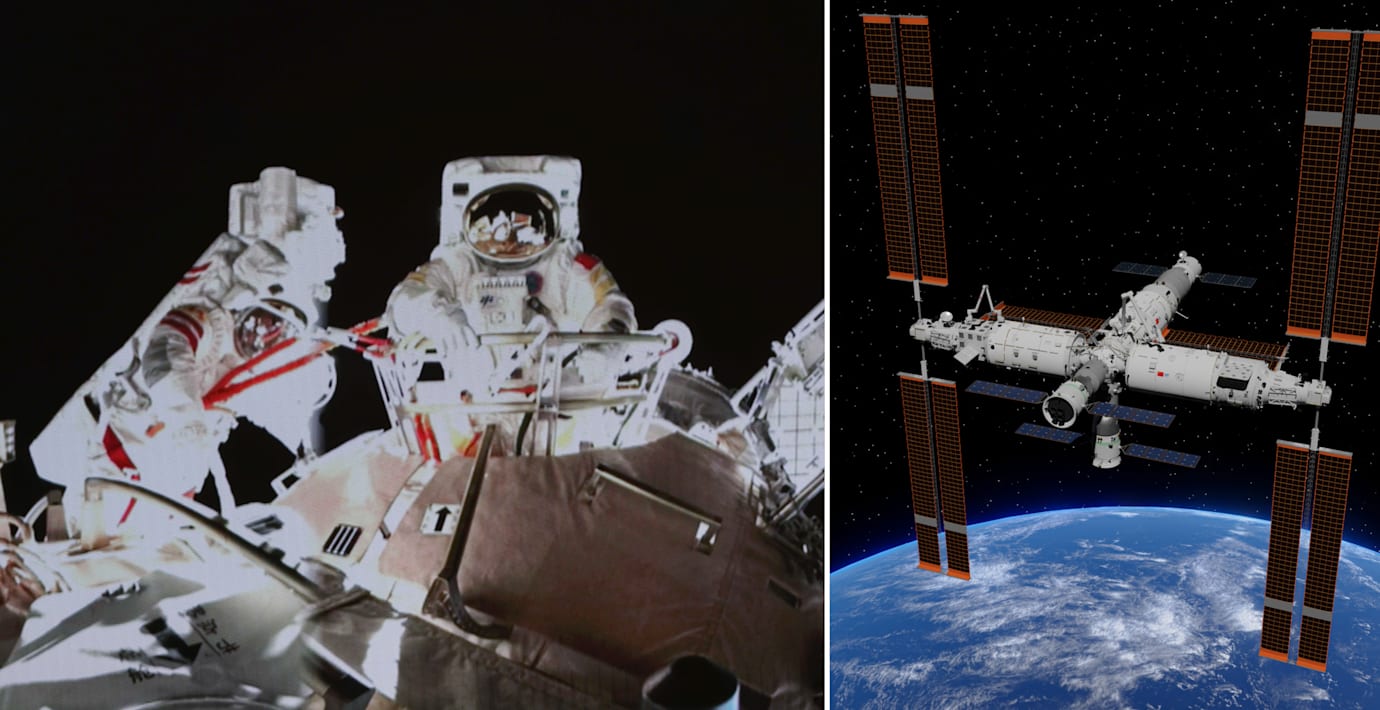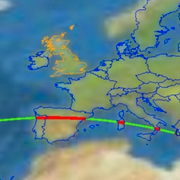
Kinesisk rymddockning en ”fullständig framgång”
Den kinesiska rymdfarkosten Shenzhou-16 har framgångsrikt dockat med modulen Tianhe, över sex timmar efter uppskjutningen i Jiuquan i nordvästra Kina.
Uppskjutningen beskrivs som en ”fullständig framgång”, skriver TT.
De tre besättningsmedlemmarna kommer att träffa sina tre kollegor som redan varit på plats på rymdstationen Tiangong i ett halvår. De senare kommer att återvända till jorden de närmaste dagarna.
bakgrund
Kinas rymdprogram
Wikipedia (en)
The space program of the People's Republic of China is directed by the China National Space Administration (CNSA). China's space program has overseen the development and launch of ballistic missiles, thousands of artificial satellites, crewed spaceflight, an indigenous space station, and has stated plans to explore the Moon, Mars, and the broader Solar System.The technological roots of the Chinese space program trace back to the 1950s, when, with the help of the newly allied Soviet Union, China began development of its first ballistic missile and rocket programs in response to the perceived American (and, later, Soviet) threats. Driven by the successes of Soviet Sputnik 1 and American Explorer 1 satellite launches in 1957 and 1958 respectively, China would launch its first satellite, Dong Fang Hong 1 in April 1970 aboard a Long March 1 rocket making it the fifth nation to place a satellite in orbit. A year later, China began development on a crewed space mission but, under pressure from Mao's Cultural Revolution on academics, was shut down and resources put to China's first reconnaissance satellite program, Fanhui Shi Weixing, which had its maiden launch in November 1975. Chinese first crewed space program began in earnest several decades later, when an accelerated program of technological development culminated in Yang Liwei's successful 2003 flight aboard Shenzhou 5. This achievement made China the third country to independently send humans into space.Today, China has one of the most active space programs in the world. It conducts either the highest or the second highest number of orbital launches each year. It operates a satellite fleet consisting of a large number of communication, navigation, remote sensing and scientific research satellites. With spacecrafts reaching as far as the Moon and Mars, China has conducted multiple complex extraterrestrial exploration missions, including landing or even sample-return. In the near future, the Chinese space program is steadily pursuing a crewed mission to the Moon, space transportation, in-orbit maintenance of spacecraft, space telescope, counterspace capabilities, quantum communications, orbiter and sample-return missions to Mars, and exploration missions throughout the Solar System and deep space.
bakgrund
Rymdstationen Tiangong
Wikipedia (en)
Tiangong (Chinese: 天宫; pinyin: Tiāngōng; lit. 'Sky Palace'), officially the Tiangong space station (Chinese: 天宫空间站; pinyin: Tiāngōng kōngjiānzhàn), is a permanently crewed space station constructed by China and operated by China Manned Space Agency in low Earth orbit between 340 and 450 km (210 and 280 mi) above the surface. It is China's first long-term space station, part of the Tiangong program and the core of the "Third Step" of the China Manned Space Program; it has a pressurised volume of 340 m³ (12,000 cu ft), slightly over one third the size of the International Space Station.
The construction of the station is based on the experience gained from its precursors, Tiangong-1 and Tiangong-2. The first module, the Tianhe ("Harmony of the Heavens") core module, was launched on 29 April 2021, followed by multiple crewed and uncrewed missions and two more laboratory cabin modules Wentian ("Quest for the Heavens") launched on 24 July 2022 and Mengtian ("Dreaming of the Heavens") launched on 31 October 2022. The spaceship aims to provide opportunities for space-based experiments and build capacity for scientific and technological innovation.
Omni är politiskt obundna och oberoende. Vi strävar efter att ge fler perspektiv på nyheterna. Har du frågor eller synpunkter kring vår rapportering? Kontakta redaktionen


